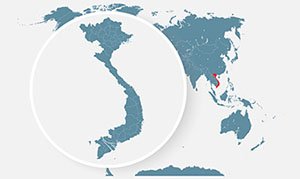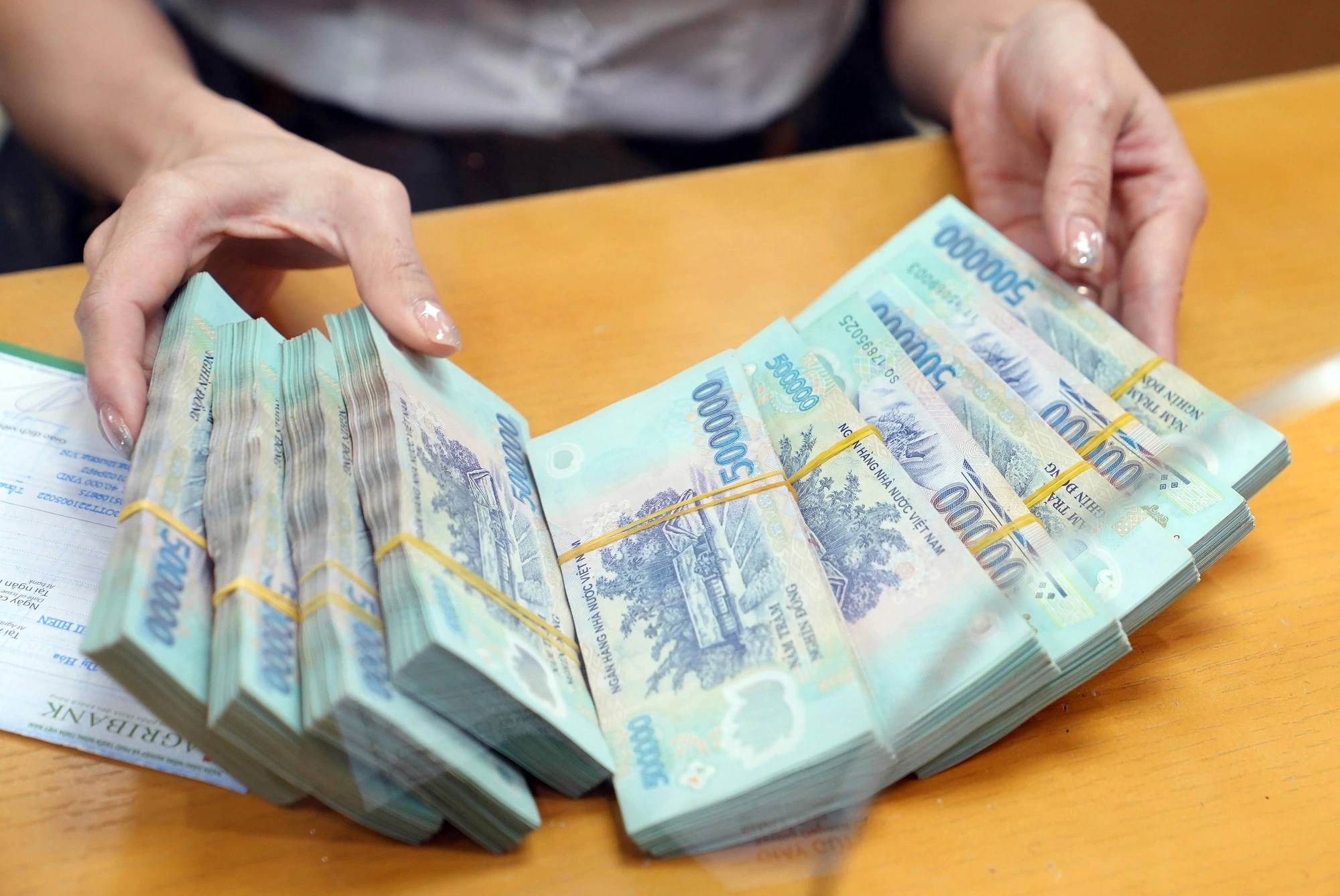Contents
ToggleAn Overview of Vietnam’s Currency
If you are traveling to Vietnam, one of the first things you’ll notice is the country’s unique currency: the Vietnamese dong. Locals call it “đồng” (pronounced like “dom”), and it is the official medium of exchange throughout the country.
- Currency name: Vietnamese dong
- Symbol: đ
- ISO code: VND
The Vietnamese dong has been in use since 1978, following reunification, replacing the old currencies of the north and south. Over the years, the dong has experienced significant devaluation, which is why today you’ll find banknotes with very high face values compared to currencies in Europe or North America. Don’t be surprised if your dinner bill comes to 200,000 VND — in reality, that’s only around €6–7 or $7–8 USD.
Types of Banknotes
Vietnam issues both cotton notes (smaller denominations) and polymer notes (larger denominations). Polymer notes were introduced in the early 2000s, making the currency more durable in Vietnam’s hot and humid climate.
Cotton notes – low denominations
These are used mostly for very small, everyday purchases such as snacks, bottled water, parking fees, or small street food items.
- 1,000 VND ≈ €0.03
- 2,000 VND ≈ €0.07
- 5,000 VND ≈ €0.17
Because of inflation, these notes often feel like “loose change.” Many shops may give them back as part of your change, and sometimes street vendors will staple them together in little bundles for convenience.
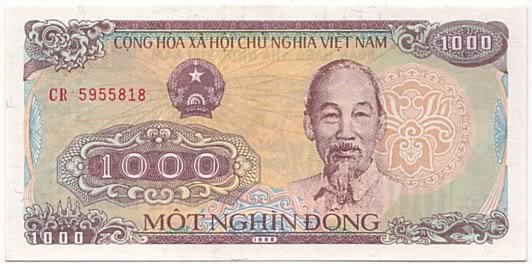
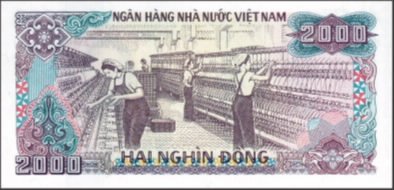
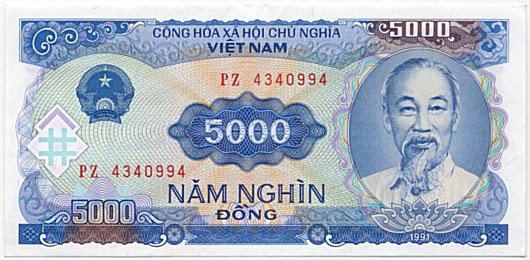
Polymer notes – medium to high denominations
Made of durable, plastic-like material, these notes are colorful, waterproof, and difficult to tear — very useful when traveling through Vietnam’s tropical weather.
- 10,000 VND ≈ €0.34
- 20,000 VND ≈ €0.67
- 50,000 VND ≈ €1.67
- 100,000 VND ≈ €3.35
- 200,000 VND ≈ €6.70
- 500,000 VND ≈ €16.75
👉 The 500,000 VND note is the largest denomination and also the one most commonly dispensed by ATMs. While convenient, this sometimes creates issues when paying for small items, as many street vendors or taxis won’t have enough change. It’s always a good idea to break larger bills at supermarkets, restaurants, or convenience stores before heading to markets or local shops.
Current Exchange Rate
As of July 2025 (Vietcombank official rate):
- 1 EUR ≈ 29,860 VND
- 1 USD ≈ 27,400 VND
💡 Tip for travelers: Because the dong is a “non-convertible currency,” you cannot legally bring in or take out large amounts. Exchange what you need upon arrival, and spend or convert most of your leftover cash before leaving Vietnam, as banks abroad rarely exchange VND.
Practical Notes
- Coins technically exist but are no longer in circulation — you will only ever use paper notes.
- Be careful not to confuse the 20,000 VND (blue-green) note with the 500,000 VND (light blue) note, especially in low light. Mixing them up is a common mistake among tourists.
- Some businesses in tourist-heavy areas (like Hanoi, Ho Chi Minh City, or Phu Quoc) may accept USD or EUR for convenience, but rates are almost always worse than the official exchange rate. Paying in VND is highly recommended.
CurrencyConverter:Handy Tools for Travelers
When dealing with a currency like the Vietnamese dong — where values often run into the hundreds of thousands — a reliable currency converter app is a lifesaver.
- XE Currency – Free, works offline after downloading rates, and supports multiple currencies at once.
- Google Currency Converter – Simple and quick; just type “100 USD to VND” into Google and get instant results.
However, online tools sometimes display mid-market exchange rates that differ slightly from what you’ll get in Vietnam. For the most accurate daily updates, check the official sites of local banks such as Vietcombank, BIDV, or ACB, which set the reference rates used across the country.
👉 Pro Tip: Screenshot or bookmark a rate table before you head out to markets or exchange counters. It helps you know if you’re getting a fair deal.
How toRecognizeVietnamese Banknotes
Vietnamese banknotes are colorful, beautifully designed, and feature President Ho Chi Minh — affectionately called “Uncle Ho” — on the front of every bill. The reverse side highlights Vietnam’s cultural icons, historic landmarks, or key industries.
Still, with so many denominations, mix-ups are easy. Tourists often confuse certain bills, which can lead to overpaying. Here’s a breakdown to help you identify them at a glance:
- 1,000 VND – Brown-grey, elephant image (rarely used except in rural areas).
- 2,000 VND – Brown-grey, textile factory (fading out of circulation).
- 5,000 VND (~€0.17) – Blue, often given as change for very small purchases.
- 10,000 VND (~€0.35) – Dark brown-green, featuring the Bạch Hổ oil field.
- 20,000 VND (~€0.70) – Blue, Hoi An’s Japanese Covered Bridge. ⚠️ Often mistaken for the 500,000 VND note.
- 50,000 VND (~€1.70) – Purple-brown, Phu Van Lau Pavilion (Hue).
- 100,000 VND (~€3.40) – Green, Temple of Literature (Hanoi).
- 200,000 VND (~€6.70) – Red-brown, Halong Bay.
- 500,000 VND (~€17) – Dark blue, Ho Chi Minh’s birthplace. ⚠️ Vendors sometimes refuse it for small purchases due to lack of change.
👉 Tip for travelers: Always take a second look before handing over cash. Many tourists have accidentally paid with 500,000 VND instead of 20,000 VND — a mistake that can turn your $0.70 coffee into a $17 one!
Cash orCardin Vietnam?
While Vietnam is modernizing quickly, it’s still very much a cash-based society. For everyday travel, keep a mix of denominations handy:
- When cards work well: Upscale restaurants, hotels, malls, and some intercity bus or train offices.
- When cash is essential: Street food stalls, local markets, taxis, cyclo drivers, small family-run guesthouses, and rural shops.
💳 Card fees: Foreign cards often come with a 3–4% transaction fee. Some banks may block “suspicious” overseas charges, so notify your bank before your trip.
👉 Pro Tip: Break larger notes at supermarkets or chain cafes like Highlands Coffee or Phúc Long. Then use 10,000–100,000 VND bills for taxis, small meals, or museum entrance tickets.
Whereto Exchange Money in Vietnam
Since the Vietnamese dong is not freely traded outside the country, it’s best to exchange currency after you arrive in Vietnam. You’ll find plenty of safe and convenient options:
- Banks – The most secure choice. Vietcombank, BIDV, ACB, and Sacombank are reliable. Bring your passport, as it may be required.
- Airport exchange counters – Very convenient after landing but typically offer slightly lower rates. Best for small amounts to cover your first taxi or meal.
- Jewelry and gold shops – Popular with locals for good rates, especially in big cities. However, these are less regulated and may not issue receipts.
ATMs in Vietnam
ATMs are everywhere, even in smaller towns, but withdrawal fees vary:
- Local bank fee: usually 20,000–50,000 VND per transaction (~€0.70–€1.70).
- Your home bank fee: depends on your card; often €3–5 per withdrawal.
- Withdrawal limits: usually 2–5 million VND per transaction (around €70–170).
👉 Pro Tip: To reduce fees, withdraw larger sums less frequently, but don’t rely on carrying only 500,000 VND notes. Always split your cash and keep it in different safe spots.
Final Thoughts
Getting used to Vietnamese money is part of the adventure. While the large numbers may seem overwhelming, you’ll quickly adapt and find it easy to navigate everyday purchases. With small bills in your pocket and a good idea of the exchange rate, you’ll be ready to enjoy Vietnam stress-free.

